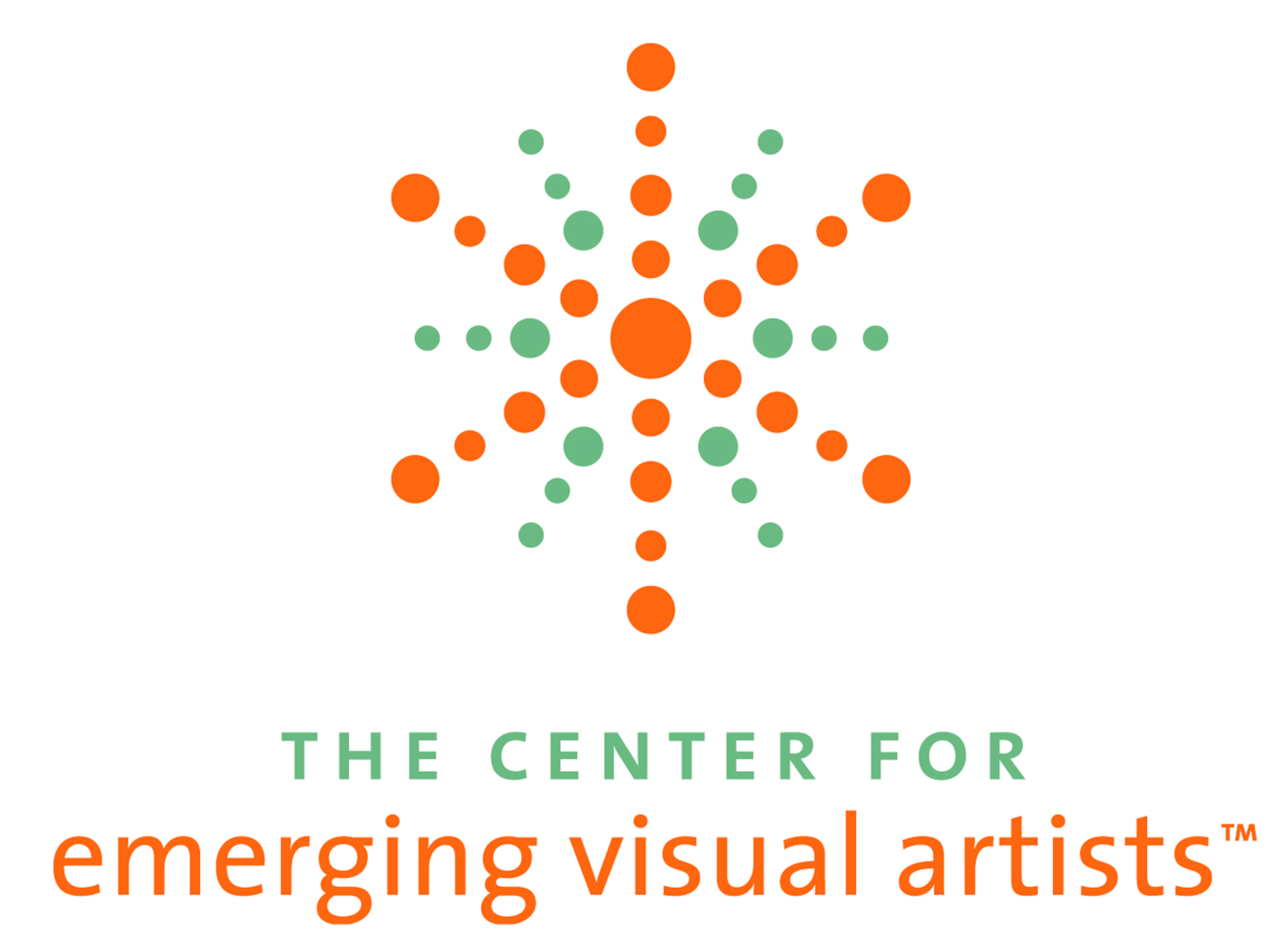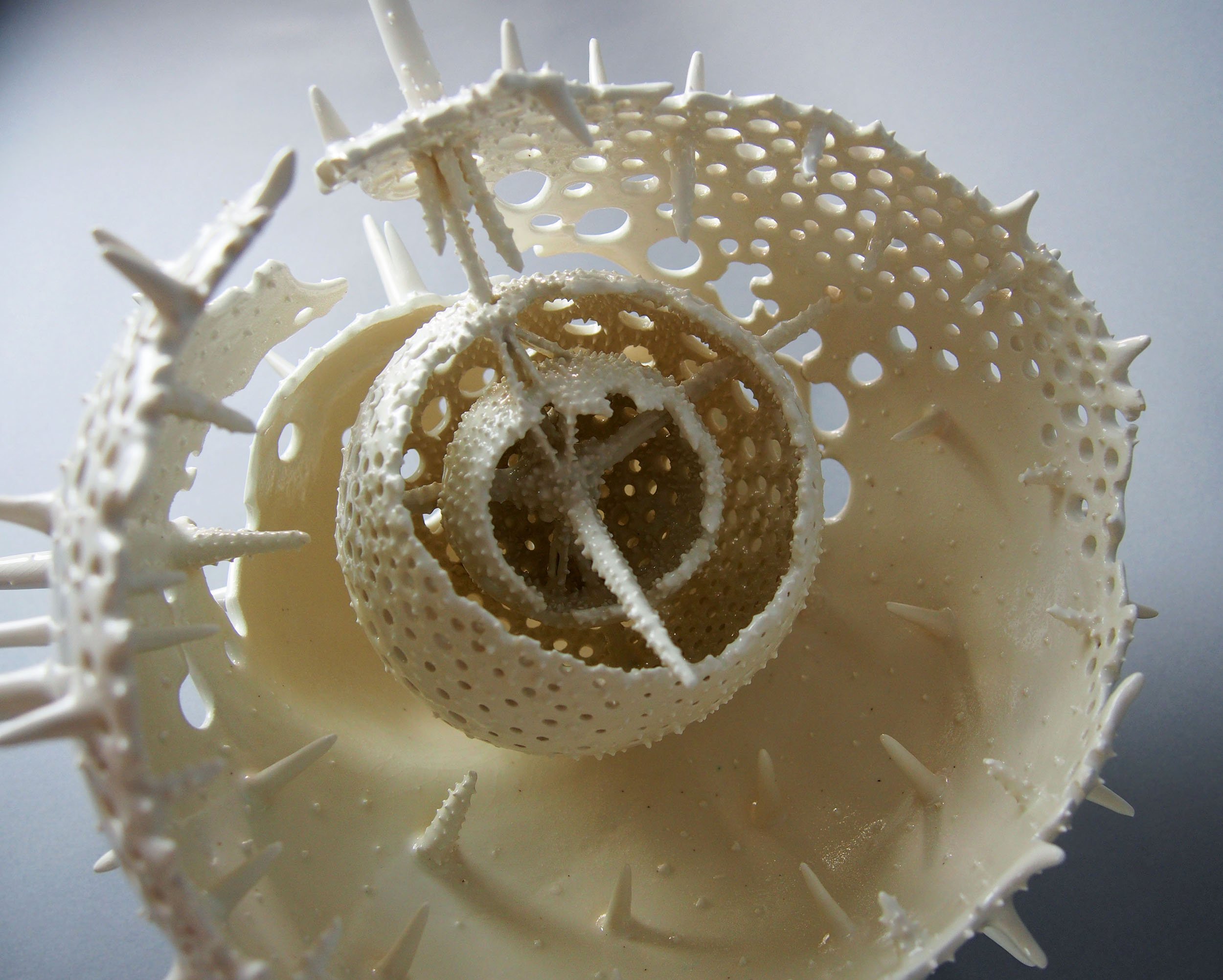Monika Lin, Philosophers’ Walnuts, Red Mirror 2
Walnut shells, gold leaf, miniature figurines, clay, foam clay, nail polish, acrylic paint, and resin on found mirrors, 18.5 x 15 x 1.5”. 2020.
"Since there are thousands of fairy tales, one may safely guess that there are probably equal numbers where the courage and determination of females rescue males,…"
—Bruno Bettelheim, The Uses of Enchantment
I am particularly drawn to explorations of written, oral, and visual historical, traditional and contemporary narratives; of how symbols and icons are employed, engaged with, and experienced; and how those images affect beliefs systems and cultures through myth-creation. As part of a collective imaginary, symbols hold power. They participate in a production of constructs that simultaneously hold culture and tradition dear while perpetuating Othering – often rendering invisibility through stereotypes of race, gender, economics, and sexuality.
Philosopher and theorist Roland Barthes argued that seemingly innocent objects and symbols carry multiple meanings which contribute to myth-making. He defines myth as belonging to the domain associated with values rather than with facts – believing that myths are not fixed but rather constructed, deconstructed, and reconstructed through continually shifting and evolving forms and meanings.
The hybrid, post-human creatures of "Philosophers’ Walnuts" emerge from miniature gilded containers (the walnut shells reference the magical source in the traditional Czechoslovakian version of Cinderella) on a substrate of found mirrors (referencing Snow White). The series emerged out of a cross-cultural comparative analysis of over 200 versions of what is known first in Western (now more globally) popular culture as the Cinderella tale. According to the Aarne Thompson Uther Index, ATU 510A are tales which generally contain key components particular to that storyline. However, the storyline first appeared in Tang Dynasty China in the story of “Ye Xian” - a tale I grew up with but unknown in most part of the world. With geographical and cultural locations ranging from China and Thailand to Greece and Scotland – further complicated by vastly differing journeys; motifs; magical beings; moments of resilience and rebellion; and outcomes - the tale makes a compelling framework for interrogating cultural assumptions and representations as well as an increasingly homogenous approach to iconography; social constructs including race, gender, and sexuality; questions of appropriation, translation, and representation; and myth-making in the global sphere. Each walnut shell contains a creature or setting to propose a launching point for its own imagined tale.
Surfacing,* an ongoing series of “invisible drawings,” likewise proposes deconstructed and reassembled tales in imagined realms which further open up dialogue regarding origin, appropriation, translation, and representation. The pieces exist within the dual framework of memory and various forms of personal, historical, traditional and contemporary narratives - building on themes of reinvention and mélange. They gather elements, motifs, and narrative moments to form a fictitious bricolage of myths and cultures. Their dynamic state is physical as well as conceptual. In Surfacing, figures populate unfixed spaces activated by light. The “drawings” (shadows cast from the engraving) can only be properly seen by focusing light onto the pieces causing the images to move in tandem with the viewer’s motions.
These works propose speculative worlds built of a multi-cultural amalgamation of folk/fairy tale, fantasy, history, and personal memory in dialogue with origin, appropriation, translation, and representation to create ambiguous cultural groundings. They harness the inherent power of images and objects to hold meaning, invite viewers to subjectively engage with their own contexts and ultimately endow them with their own potency.
*The title “Surfacing” comes from the Chinese characters 表面化 (Biao Mian Hua) which can mean both “come to the surface” and “become apparent.”
Monika Lin holds an MFA from the School of Visual Arts in New York City, an MA in Interactive Media Arts from NYU Tisch School of the Arts, and a BFA from Mills College in Oakland, CA. Her work interrogates social-political themes emphasizing various frameworks - imperial and colonial legacies; cultural constructs; labor; ecologies of the Anthropocene; the social relevance of art through dialogue, collaboration and relational experience; and questions of myth and materiality. Ms. Lin has lived in Shanghai since 2006 and recently moved to Philadelphia (May 2023). She now divides her time between Philadelphia and Shanghai. She has attended residencies in Madrid, Chengdu, Jingdezhen, and San Francisco. Notable exhibitions and installations include the Shanghai Biennale; Konzepthauslaboratorium in Thun, Switzerland; public sculptures in Qiandaohu and Nanjing, China; the Power Station of Art Museum in Shanghai; the Sichuan Fine Art Institute, Qongqing, China; the Chiang Kai Shek Museum, Taipei, Taiwan and a commissioned work for the Peninsula Museum in Weihai, China. She is currently an Associate Arts Professor of Visual Arts at New York University Shanghai.









